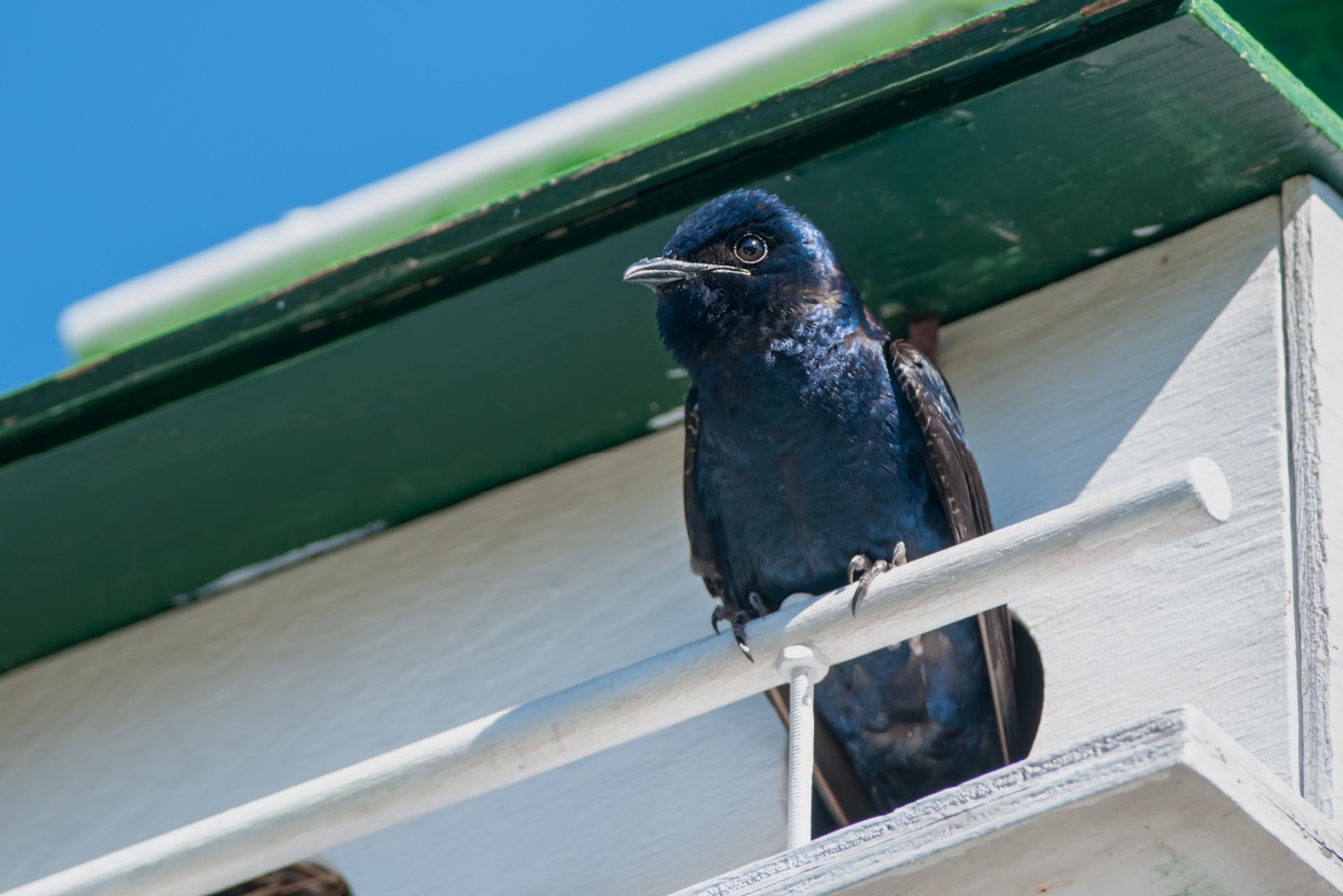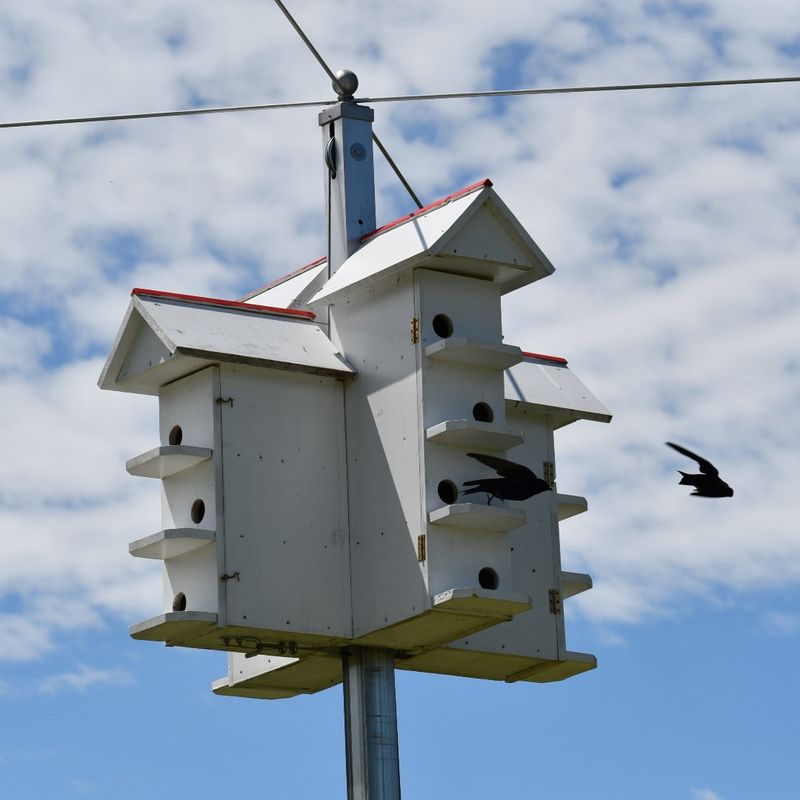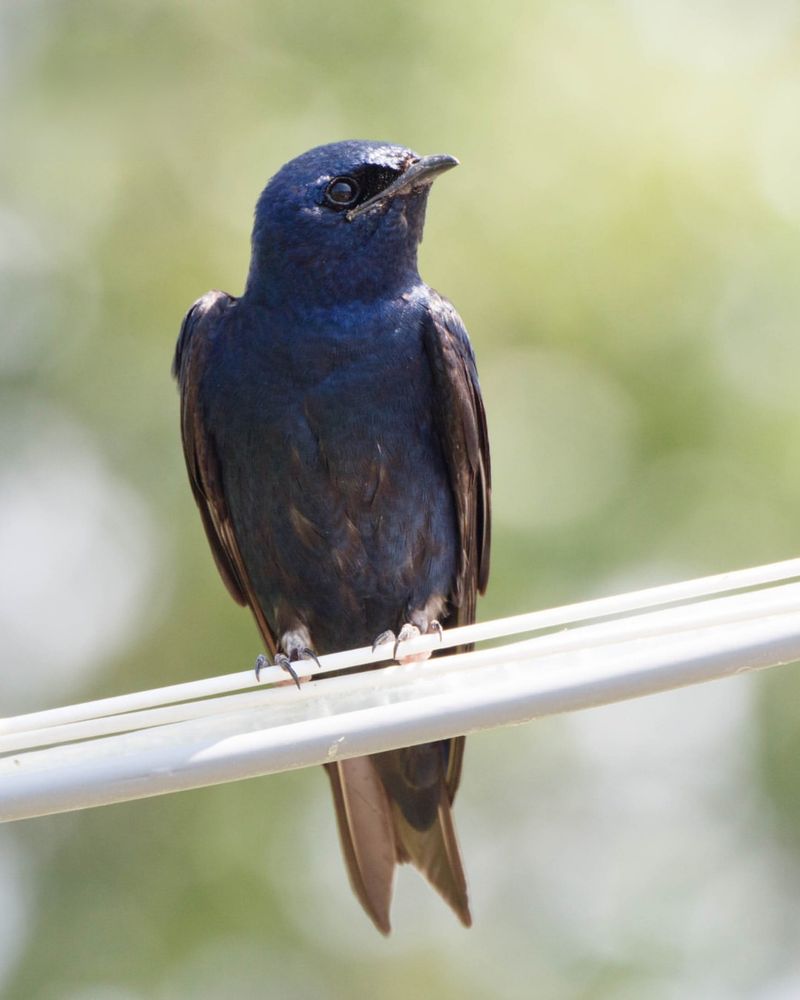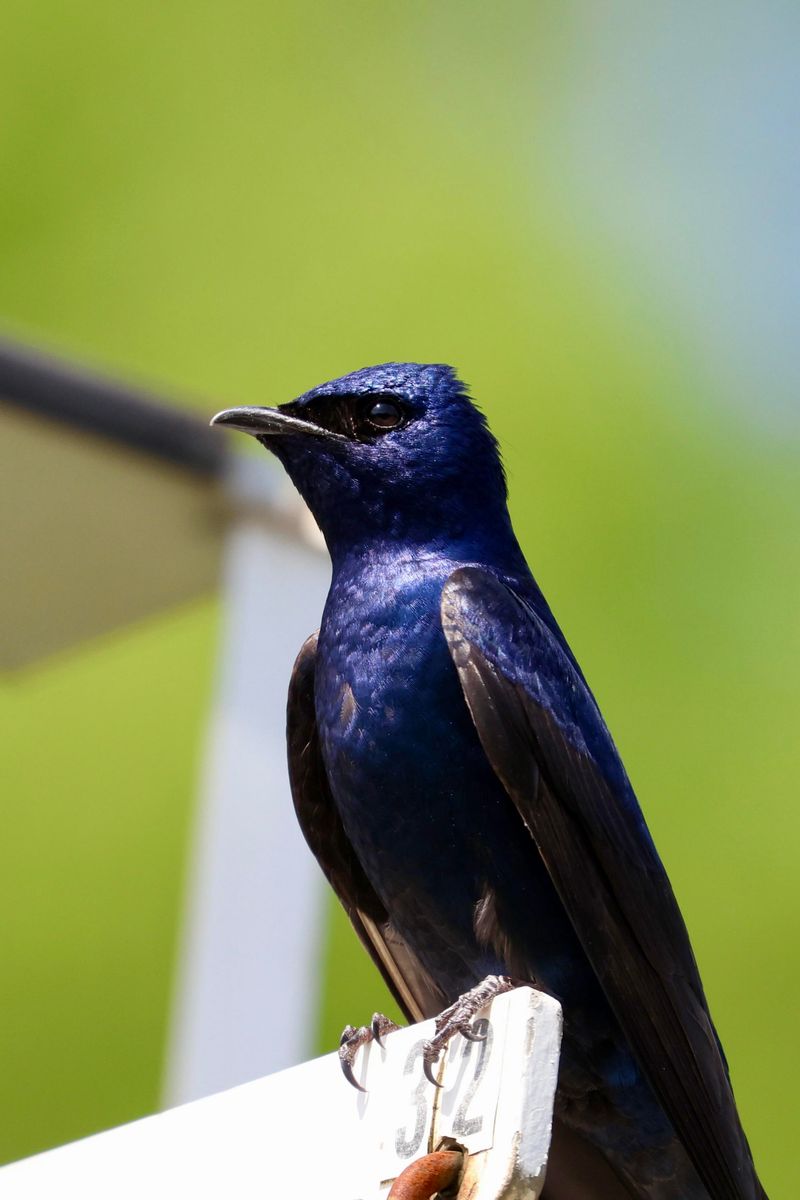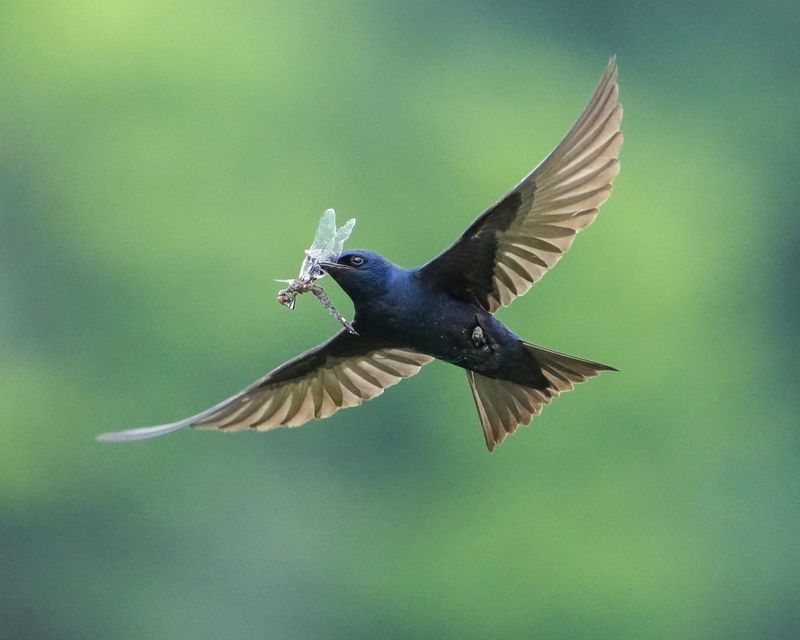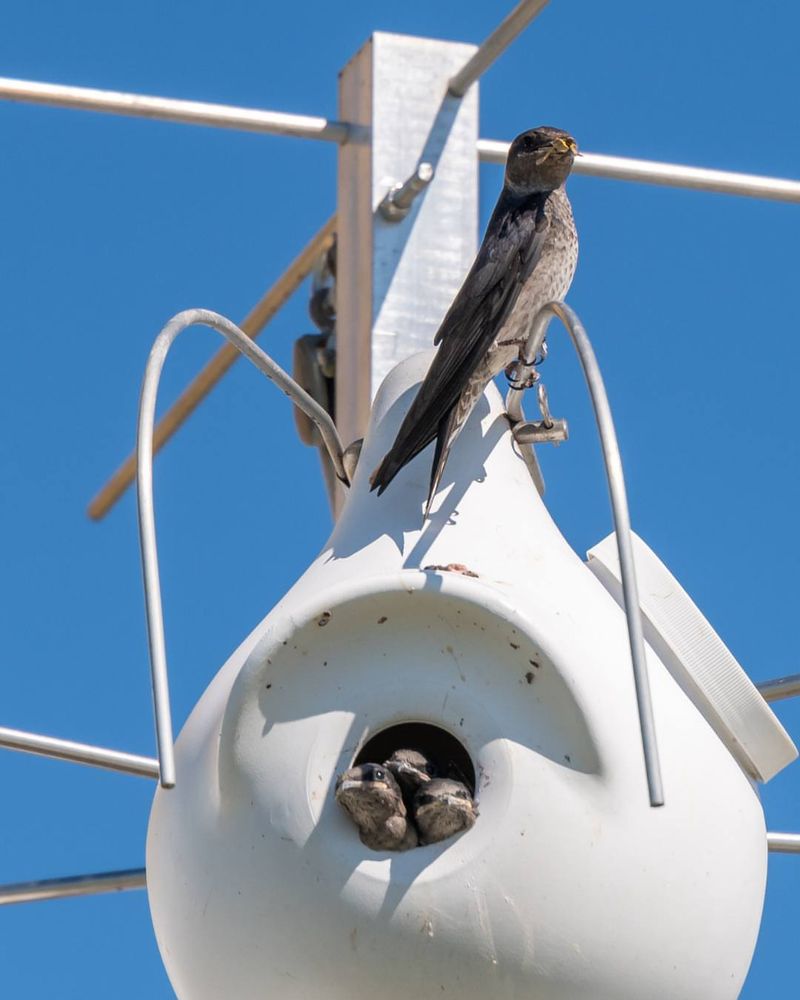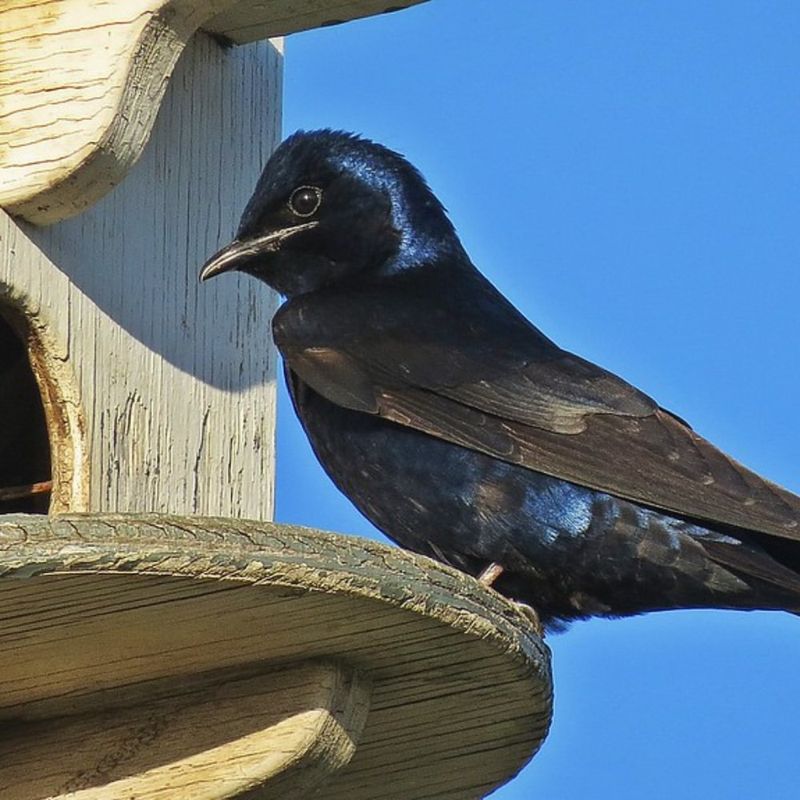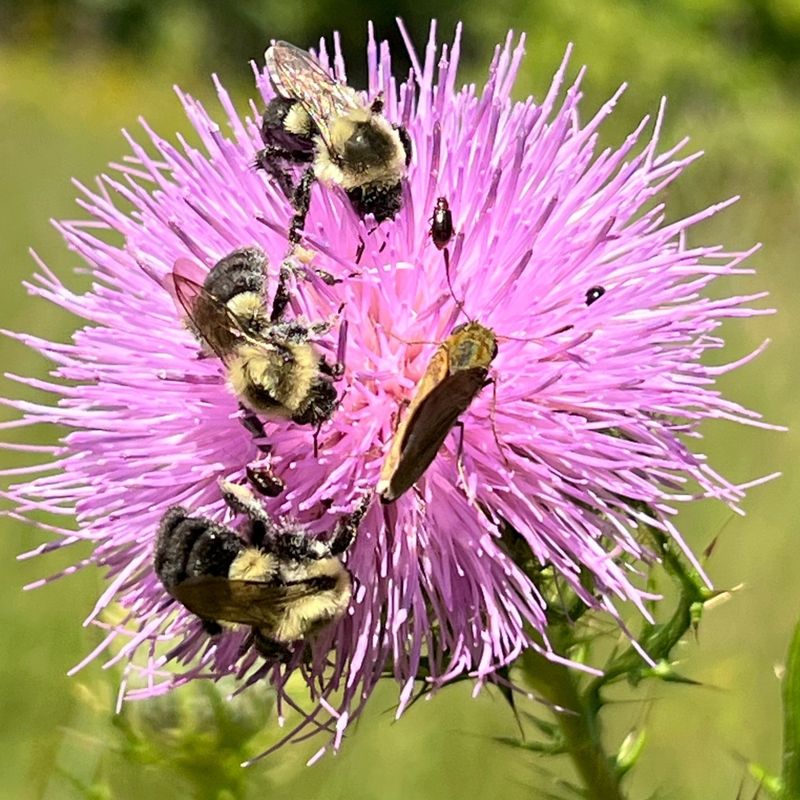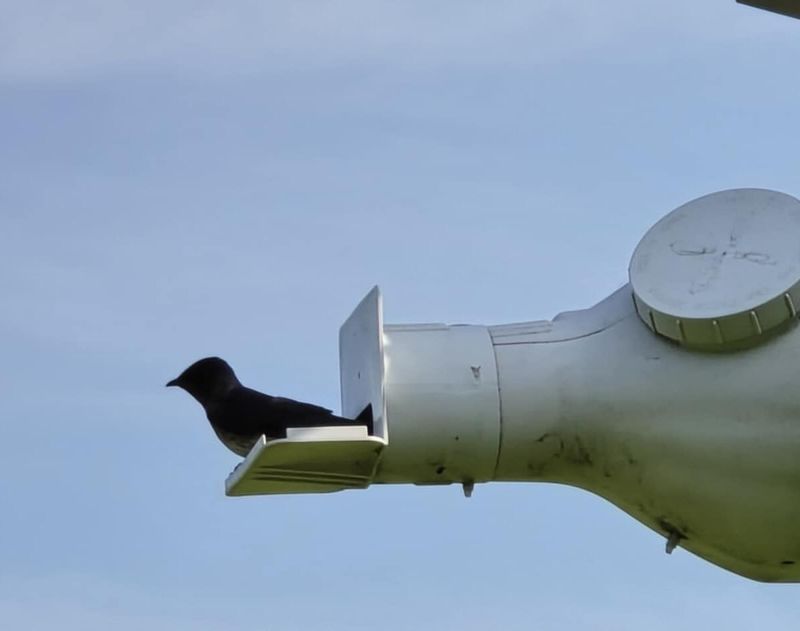Every spring, Illinois backyards come alive with the possibility of hosting Purple Martins, those beautiful aerial acrobats that feast on mosquitoes and bring cheerful chirping to our outdoor spaces.
In my suburban Chicago garden, I always look forward to spotting these iridescent birds swooping around—their arrival signals that warm weather has truly arrived.
If you’re hoping to welcome these beneficial birds to your yard, these eight practical strategies will help create the perfect Purple Martin habitat right outside your window.
1. Install A Proper Martin House In A Sunny Spot
Success starts with the right housing. Traditional multi-compartment martin houses should be mounted 15-20 feet high in open areas at least 40 feet from tall trees.
Place houses where they receive plenty of sunlight throughout the day. The warmth helps control parasites and provides comfortable nesting conditions for martin families.
Here in Illinois, mid-March is perfect timing for setup—just before the scouts arrive looking for real estate. I’ve found houses painted white reflect heat and attract more birds than darker colors.
2. Create An Open Flying Zone
Martins need room to swoop and dive! Clear at least a 40-foot radius around your martin housing without tall obstacles that could block their flight paths or harbor predators.
Trim back any encroaching tree branches that cast shadows on the houses. These birds evolved to nest in open areas, and they’re naturally cautious about places where hawks might perch.
My Naperville neighbor struggled to attract martins until she removed a small ornamental tree that was too close to her martin house. Within weeks of creating more open space, the first scout appeared!
3. Use Decoys And Dawn Song Playback
Fake it till they make it! Plastic martin decoys mounted on your housing signal to passing birds that your location is already approved by other martins.
Playing recorded Purple Martin dawnsongs through a weather-protected speaker system near your houses works like a dinner bell. The cheerful chirps and chatters broadcast that your yard is martin-friendly territory.
A friend in Springfield combines both techniques each March, running his recordings from 5:30-8:00 AM when scouts are most active. His colony grew from zero to twelve pairs in just two seasons using this clever approach.
4. Protect From Predators With Guards
Raccoons, snakes, and owls find martin houses irresistible for all the wrong reasons. Installing proper predator guards on mounting poles creates a safe haven for your feathered visitors.
Metal baffles that wrap around poles prevent climbing predators from reaching nests. For added protection, consider adding owl guards to house entrances during nesting season.
After losing an entire colony to raccoons, my cousin in Champaign installed a stovepipe baffle. The difference was immediate—not a single nest was disturbed the following season, and his martin population doubled.
5. Provide Supplemental Nesting Materials
Make your martin houses move-in ready by offering nesting materials nearby. Small piles of pine needles, dried grass, and small twigs placed in open areas give martins easy building supplies.
Fresh green leaves are particularly valued by nesting martins. They contain natural compounds that help repel nest parasites, giving baby birds a healthier start in life.
During cold, wet Illinois springs, I scatter crushed eggshells on my driveway. The calcium-rich shells serve double duty—martins use them for nesting material and consume them for extra minerals during egg-laying season.
6. Maintain Nearby Water Features
Martins appreciate convenient bathing and drinking spots. Birdbaths with gently moving water attract these aerial acrobats, especially during hot Illinois summers when they need to cool off.
The ideal water feature has gradually sloping sides and shallow edges where martins can safely wade. Adding a solar-powered bubbler creates movement that catches their attention from above.
Last July, I watched a family of martins visit my garden pond repeatedly throughout the day. They would swoop down, skim the surface to drink, then splash in the shallows before returning to their nearby house—pure backyard entertainment!
7. Establish Insect-Friendly Plantings
Purple Martins feast on flying insects, consuming thousands daily. Native Illinois wildflowers like purple coneflower, black-eyed Susan, and Joe-Pye weed attract the bugs that martins love to eat.
Avoid using chemical pesticides that kill the insects martins depend on. Natural pest management keeps your yard’s food chain intact and ensures plenty of aerial meals for hungry birds.
The meadow section of my yard buzzes with insect activity all summer. Whenever I see martins diving and swooping above these plantings, I know my natural gardening approach is paying off with an all-you-can-eat buffet for my feathered tenants.
8. Practice Regular Maintenance And Monitoring
Successful martin landlords keep their houses in top condition. Each fall after migration, lower your houses to clean out old nesting materials and check for needed repairs.
Keep detailed records of when martins arrive, how many nest compartments are used, and when babies fledge. This information helps you improve your setup year after year.
Throughout northern Illinois, dedicated martin enthusiasts form monitoring networks to share observations. My participation in the Kane County Purple Martin Watch has connected me with experienced mentors who’ve helped me grow my colony from two pairs to fourteen in just three seasons.

